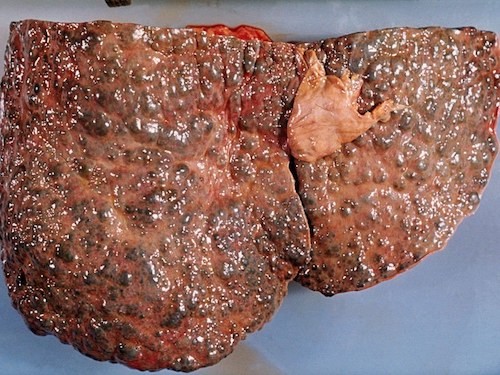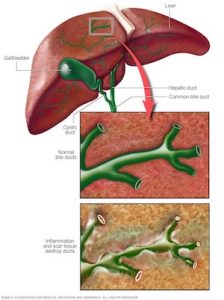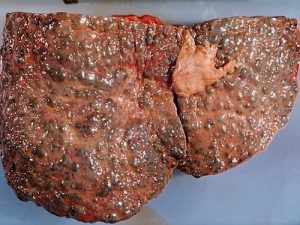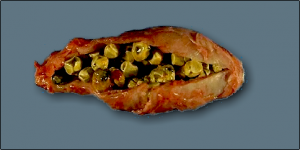
Cirrhosis of the Liver Stage 4
It's been 11 years since I started my Wiki and shared articles on Liver Disease. In that time the website in its various forms has had millions of visitors and helped countless people.
I've only ever asked for help once in those 11 years and that was to help pay the hosting. But that was only once.
For the rest of the years I have built, populated, maintained and tried to improve the website and given support to many people.
It now turns out that I have cancer of the throat - just diagnosed in January 2020.
I have created a Facebook page to post updates on - https://www.facebook.com/Craig-Cameron-My-Story-104963801053247/
Once I get 200 Likes I can change the name to remove the numbers on the end - and that will look better 🙂
I really would appreciate it if you would visit my Facebook page and 'Like' it -
Once I get some support from the people who visit this site I will remove this message.
Cirrhosis of the Liver Stage 4
This site can teach you how to manage, treat and even reverse cirrhosis of the liver stage 4. Many of our members have been able to resume near normal lives without needing a transplant.
If you are worried about cirrhosis this site can help you.
Looking for information on cirrhosis of the liver stage 4? Liver cirrhosis, a ‘silent killer’, is a chronic disease. There are no symptoms during the early phases of this disease. Read on to know about liver cirrhosis stages and cirrhosis of the liver life expectancy.
Liver cirrhosis indicates injured or damaged liver cells. Normal liver tissues get replaced with scar tissues during liver cirrhosis. Scarring of the liver is caused by long term injury or damage to the liver resulting in loss of liver function. Cirrhosis of the liver stage 4 denotes the final stages of the disease.
Liver plays an important role in digestion and detoxification. Cirrhosis of the liver affects the liver function. As liver cirrhosis cannot be reversed, the treatment involves only prevention of further progression of the disease.
Cirrhosis of the Liver Stages
Cirrhosis of the Liver Stage#1:
During this initial stage of cirrhosis, the person normally does not experience any symptoms. If closely observed, there are symptoms indicating liver function problem, which include dry mouth, fatigue, jaundice and enlargement of the upper stomach area. Itching sensation is also sometimes experienced.
The liver suffers from inflammation and abnormal tissue but disease progression and liver function deterioration is very slow. Advancement of cirrhosis of the liver can only be determined by biopsy results.
The initial stage of liver cirrhosis is actually called ‘compensated stage’, as the body successfully manages and compensates on its own for all the shortcomings that are brought on by malfunctioning of the liver.
Cirrhosis of the Liver Stage#2:
During this stage, abnormal tissues developed inside the liver get transformed into stiff bands of connective tissues. This process is known as fibrosis. Fibrosis and inflammation of the liver spreads and affects the portal veins and the surrounding regions.
Cirrhosis of the Liver Stage#3:
As the disease advances, all the stiff bands begin to merge with each other. This leads to the enlargement of affected areas. Disruption of liver functions is generally noticed during this stage, as the person experiences inability to digest fats. Vitamin deficiency can also be noticed due to problem in absorption of fat-soluble vitamins.
Cirrhosis of the Liver Stage#4:
The final stage of liver cirrhosis is known as the decompensated stage of cirrhosis. This stage is the most dreaded one. Liver transplant is the only treatment option for patients in the decompensated stage. (Note: This statement is not completely accurate. For those with Alcoholic Cirrhosis the damage can be halted and a return made to reasonably normal life by abstaining from alcohol, undertaking a regimen of vitamins and minerals and eating a healthy diet. This can and does happen as long as the disease is not too far advanced. Further information is available on this site which will set you on the right path. Many people who have joined this site have survived through the help given by this site.)
Worsening of all the symptoms can be noticed. Here is a list of most common liver cirrhosis symptoms.
Liver Cirrhosis Symptoms:
Compensated Stage
Fatigue
Extreme thirst
Thick coating on the dorsal surface of the tongue
Anorexia
Nausea
Abdominal bloating
Dull ache in the liver area
Cirrhosis of the Liver Stage 4 Symptoms:
Decompensated Stage
Spider moles
Liver shrinkage
Jaundice
Edema
Ascites
Liver palms
Low grade fever
Severe fatigue, exhaustion
Loss of appetite
Stomach pain and cramps
Easy bruising and bleeding (especially in the abdominal region)
Cirrhosis of the Liver Life Expectancy
Cirrhosis of the liver stage 4 can result in severe health complications such as portal hypertension, spleen enlargement, hardening of liver, kidney dysfunction and accumulation of fluid in the body. Loss of bone mass and a drop in the bone density can also be noticed. Pertaining to the impaired liver functioning, the body will lose its ability to detoxify itself, resulting in concentration of toxins in the body. This will lead to severe confusion, even a coma.
After heart disease and cancer, liver cirrhosis is the third leading cause of death. There are many types of cirrhosis, based on the causes. Alcoholic cirrhosis has the worst prognosis, when compared to primary biliary cirrhosis or cirrhosis induced by hepatitis. Cirrhosis life expectancy can be about 15 to 20 years if cirrhosis is detected during an early stage.
If the disease is detected in second stage, life expectancy will be about 6 to 10 years. Patients in earlier stages can opt for latest treatment options, liver transplant, latest medicines, etc. If cirrhosis is diagnosed during the last stage, then life expectancy will be about 1-3 years, depending upon the patient’s overall health, availability of advanced treatment, etc.
I hope the above information has helped you to understand what is cirrhosis of the liver. Liver cirrhosis does not have a sudden onset, it takes years of damage to produce harmful scarring, and then many more years of abuse for the liver to stop functioning completely. Overlooked underlying conditions make the condition deadly. Cirrhosis treatment can help stop or slow down the progression of the disease.
During cirrhosis of the liver stage 4, liver failure and other health complications ultimately result in death of the person. Since cirrhosis of the liver and death are closely associated, it is necessary to undergo routine medical check-ups to monitor liver function. Cirrhosis is mostly detected during the test for some other health problems. Half yearly examination can help improve your chances of detecting an early cirrhosis.
By Leena Palande
Published: 8/14/2010
Related Posts
Drinking coffee can REDUCE your risk of heart arrhythmias
Drinking coffee can REDUCE your risk of heart arrhythmias – with each additional daily cup lowering the chance by 3 per cent, surprising study finds University of California experts studied 386,258 participants for around 5 years Data was sourced from the UK Biobank’s collection of genetic and health data They found that advice to cut down…
What Is Alcoholic Liver Cirrhosis?
What Is Alcoholic Liver Cirrhosis? The liver is a large organ with an important job in your body. It filters the blood of toxins, breaks down proteins, and creates bile to help the body absorb fats. When a person drinks alcohol heavily over the course of decades, the body starts to replace the liver’s healthy…
What is Cryptogenic Cirrhosis?
Cryptogenic cirrhosis is a condition that impairs liver function. People with this condition develop irreversible liver disease caused by scarring of the liver (cirrhosis), typically in mid- to late adulthood. The liver is a part of the digestive system that helps break down food, store energy, and remove waste products, including toxins. Minor damage to…
Cirrhosis Life Expectancy
It’s been 11 years since I started my Wiki and shared articles on Liver Disease. In that time the website in its various forms has had millions of visitors and helped countless people. I’ve only ever asked for help once in those 11 years and that was to help pay the hosting. But that was…
What Is Primary biliary cholangitis?
Primary biliary cholangitis Bile duct damage Primary biliary cholangitis, previously called primary biliary cirrhosis, is a chronic disease in which the bile ducts in your liver are slowly destroyed. Bile is a fluid made in your liver. It aids with digestion and helps your body get rid of cholesterol, toxins and worn-out red blood cells.…
Deaths from Liver Disease Rising Rapidly.
Deaths From Liver Disease Rising Rapidly The Great Recession continues to take a grim toll: Since 2009, a growing number of Americans have died from liver disease and liver cancer. The increase among 25- to 34-year-olds is especially troubling because the deaths are due to cirrhosis, a disease caused by excessive drinking, the authors of…
Cirrhosis of the Liver Stage 4
It’s been 11 years since I started my Wiki and shared articles on Liver Disease. In that time the website in its various forms has had millions of visitors and helped countless people. I’ve only ever asked for help once in those 11 years and that was to help pay the hosting. But that was…
Gallstones
Gallstones Overview Gallstones can lurk inside your gallbladder. Many people have gallstones and never know it. Gallstones are hard deposits in your gallbladder, a small organ that stores bile, which is a digestive fluid made in the liver. Gallstones may consist of cholesterol, salt, or bilirubin, which is discarded red blood cells. Gallstones range in…









